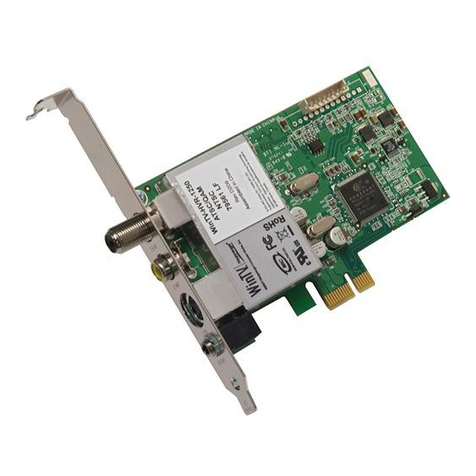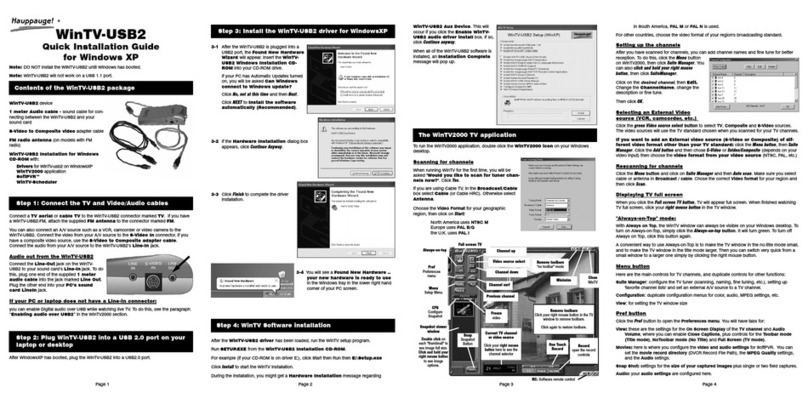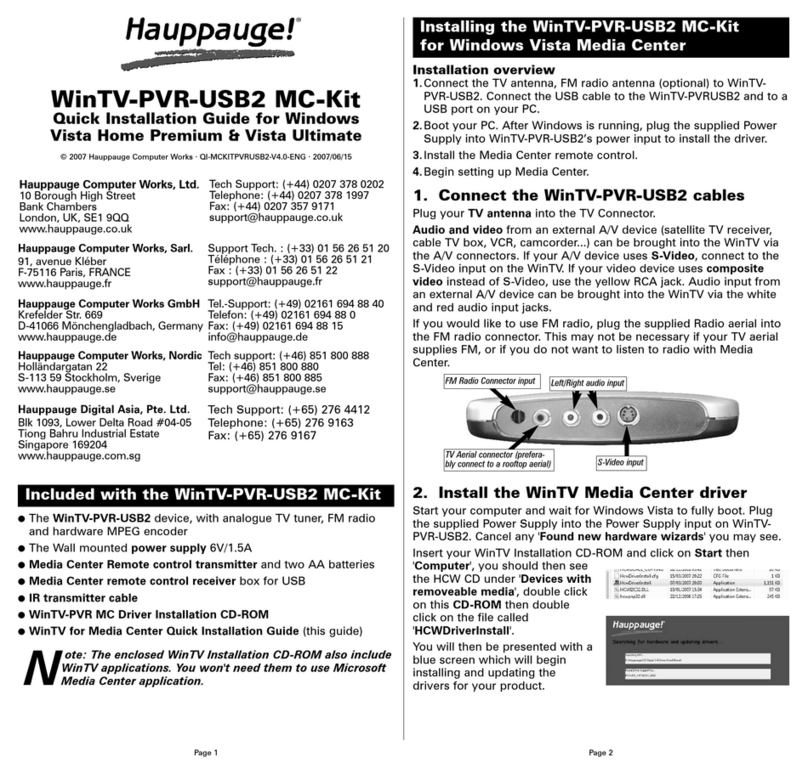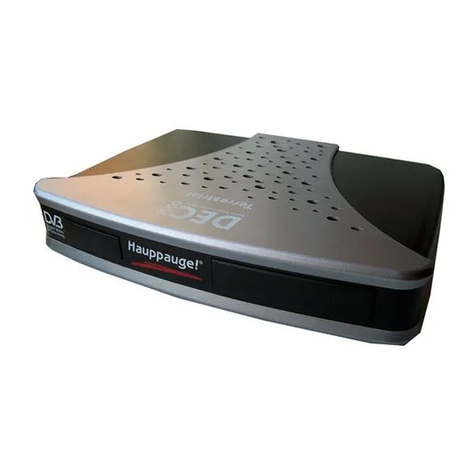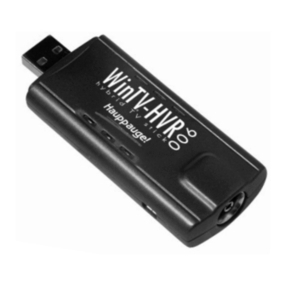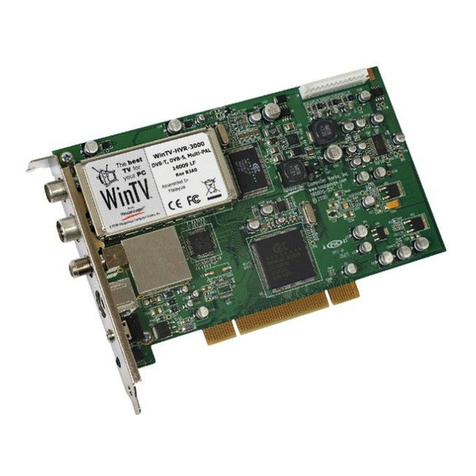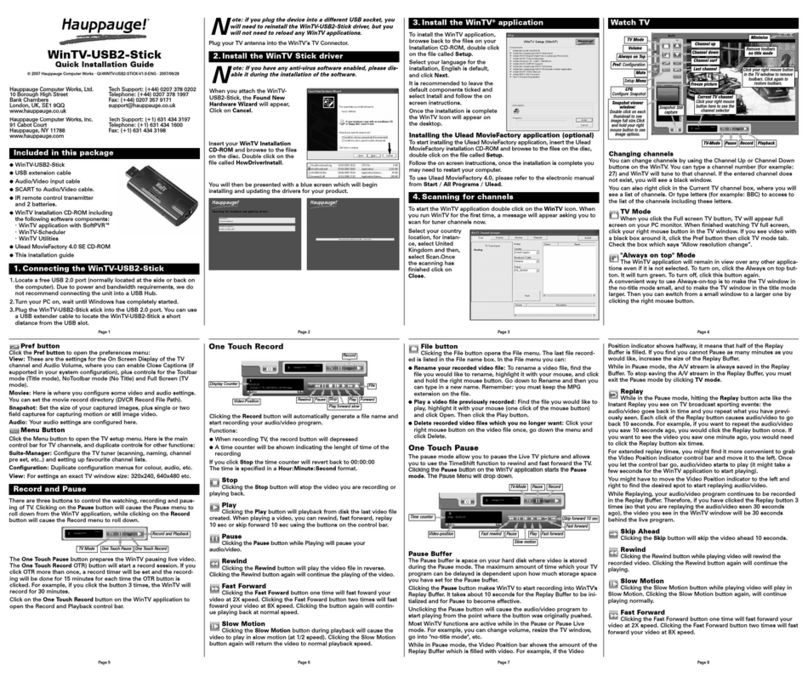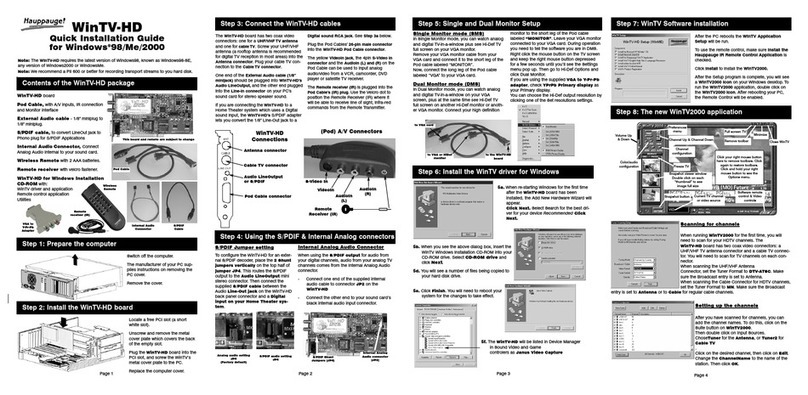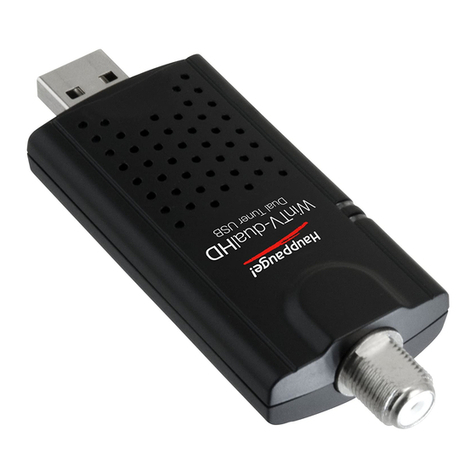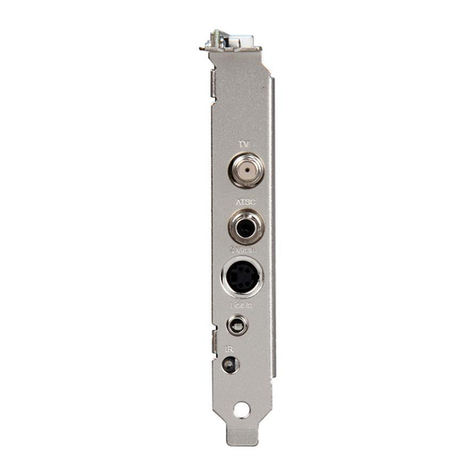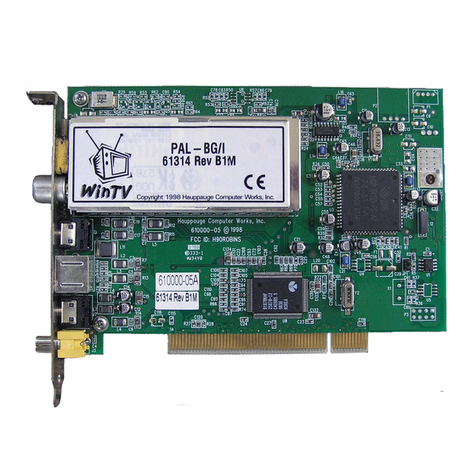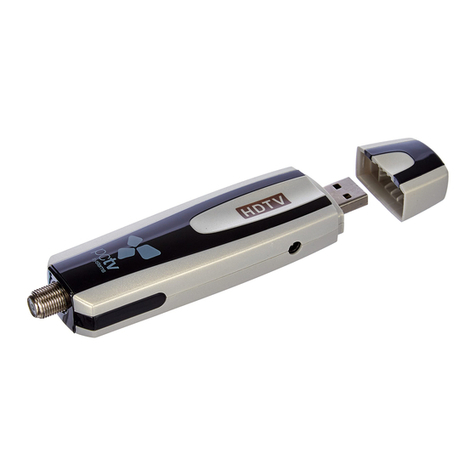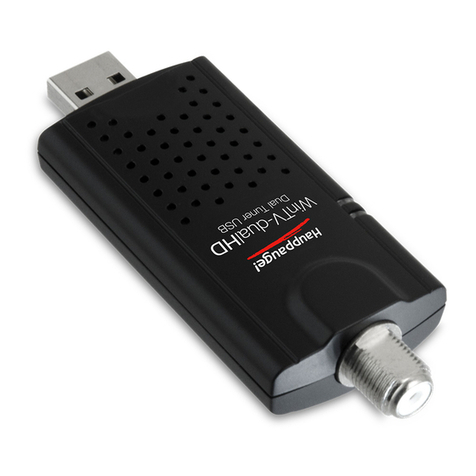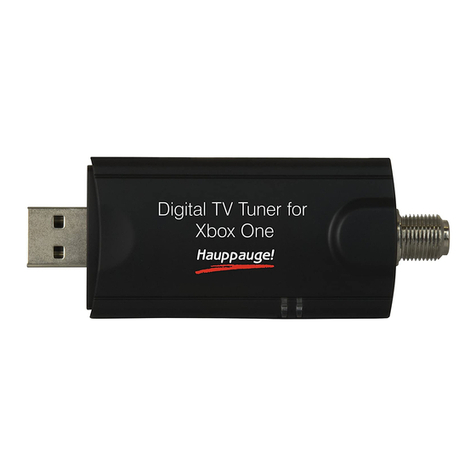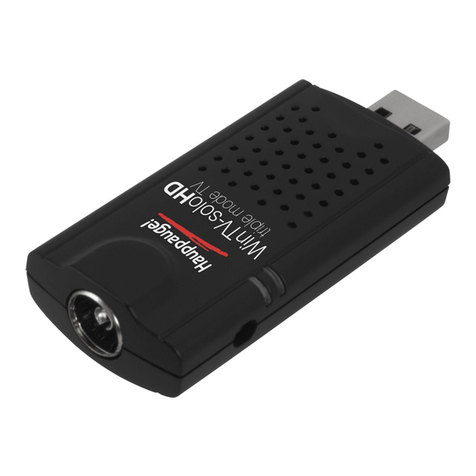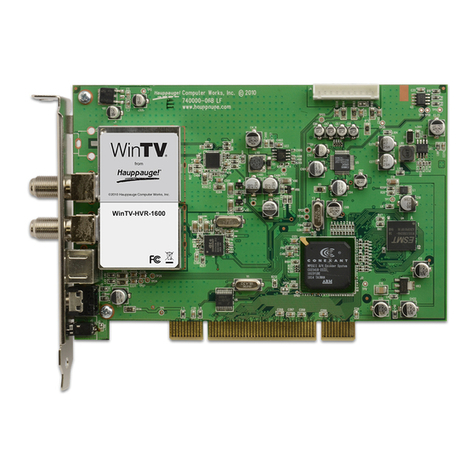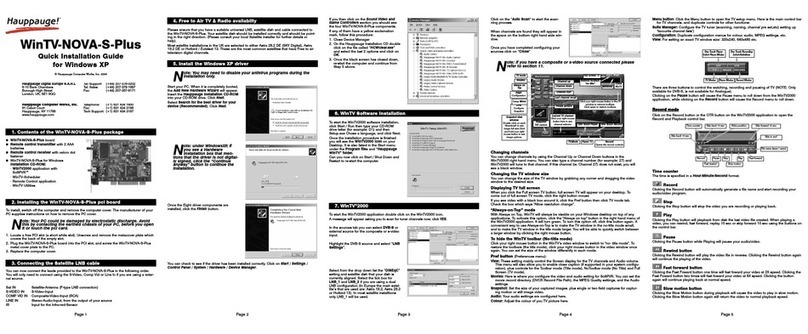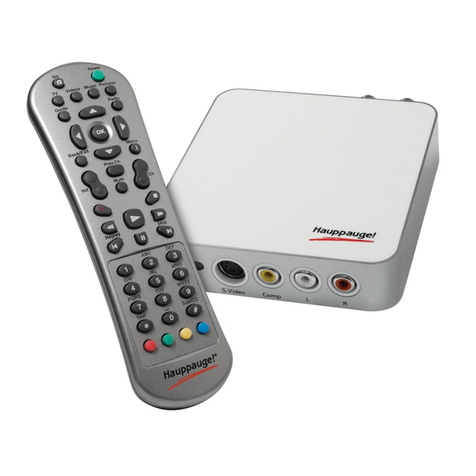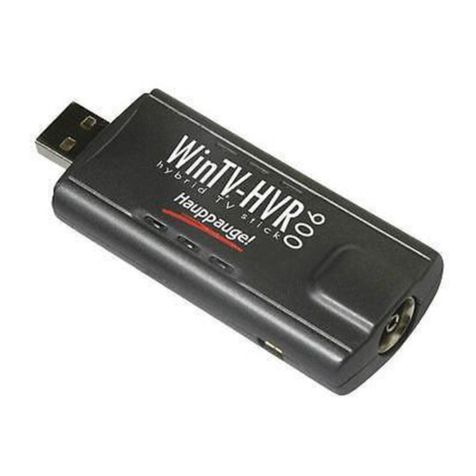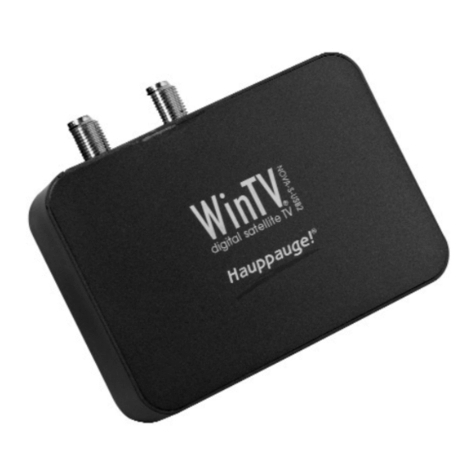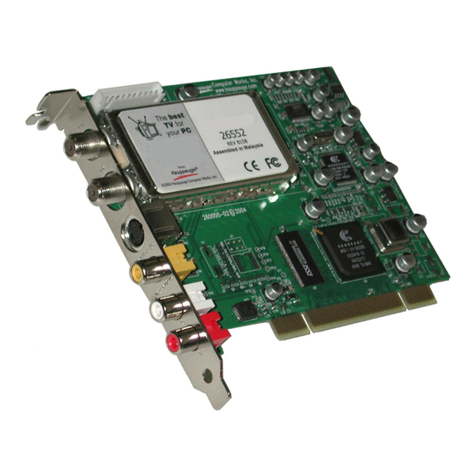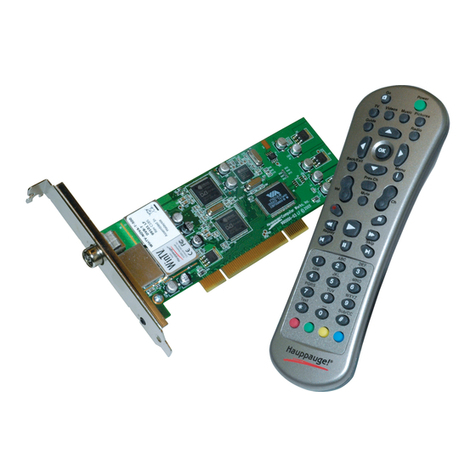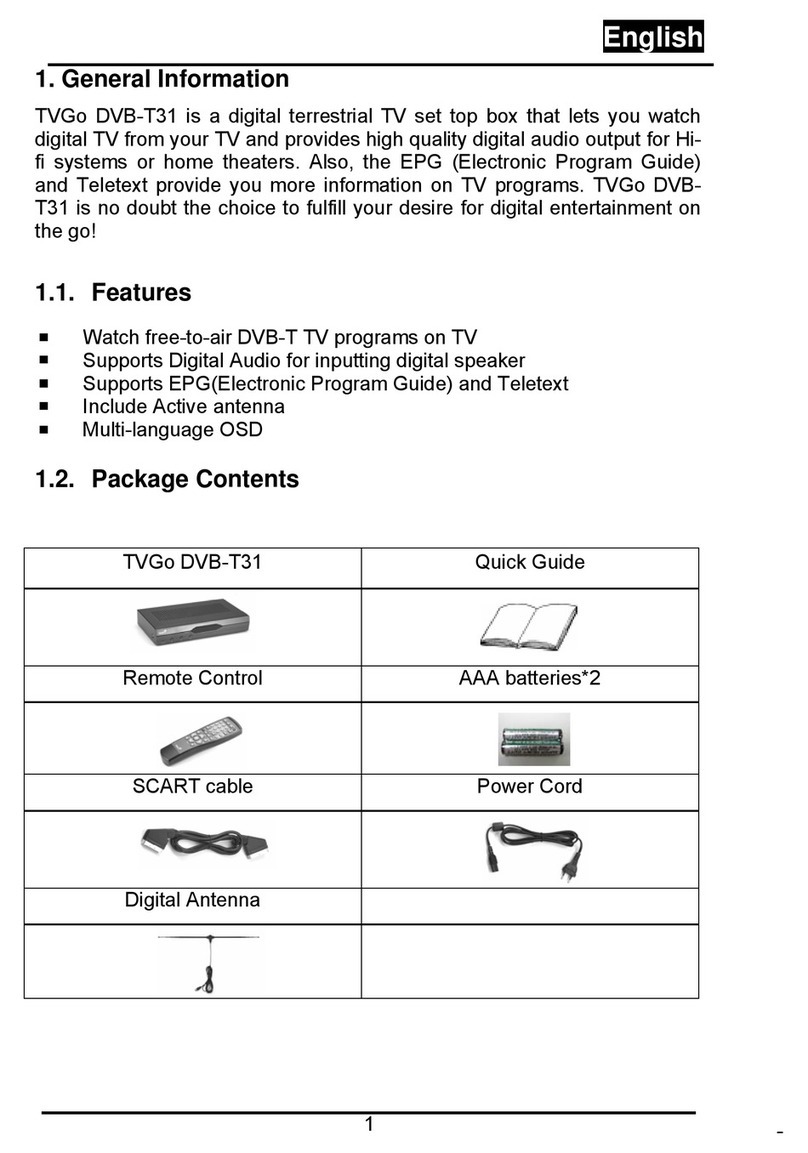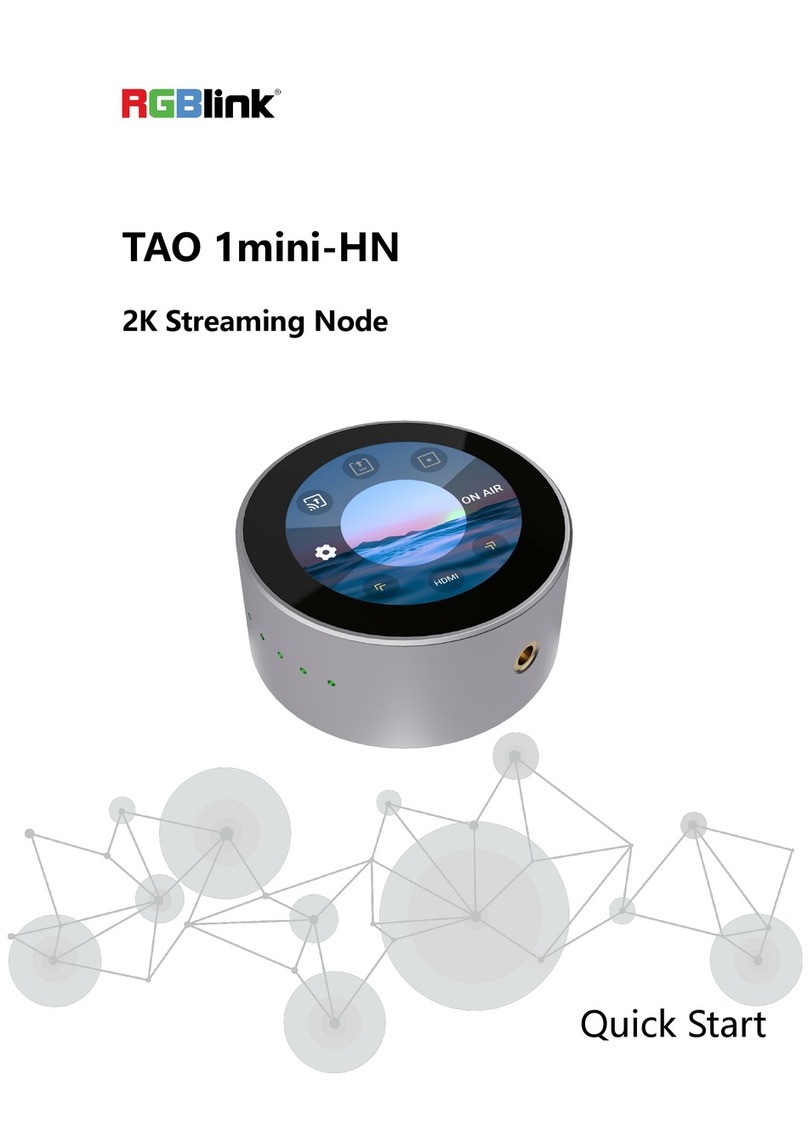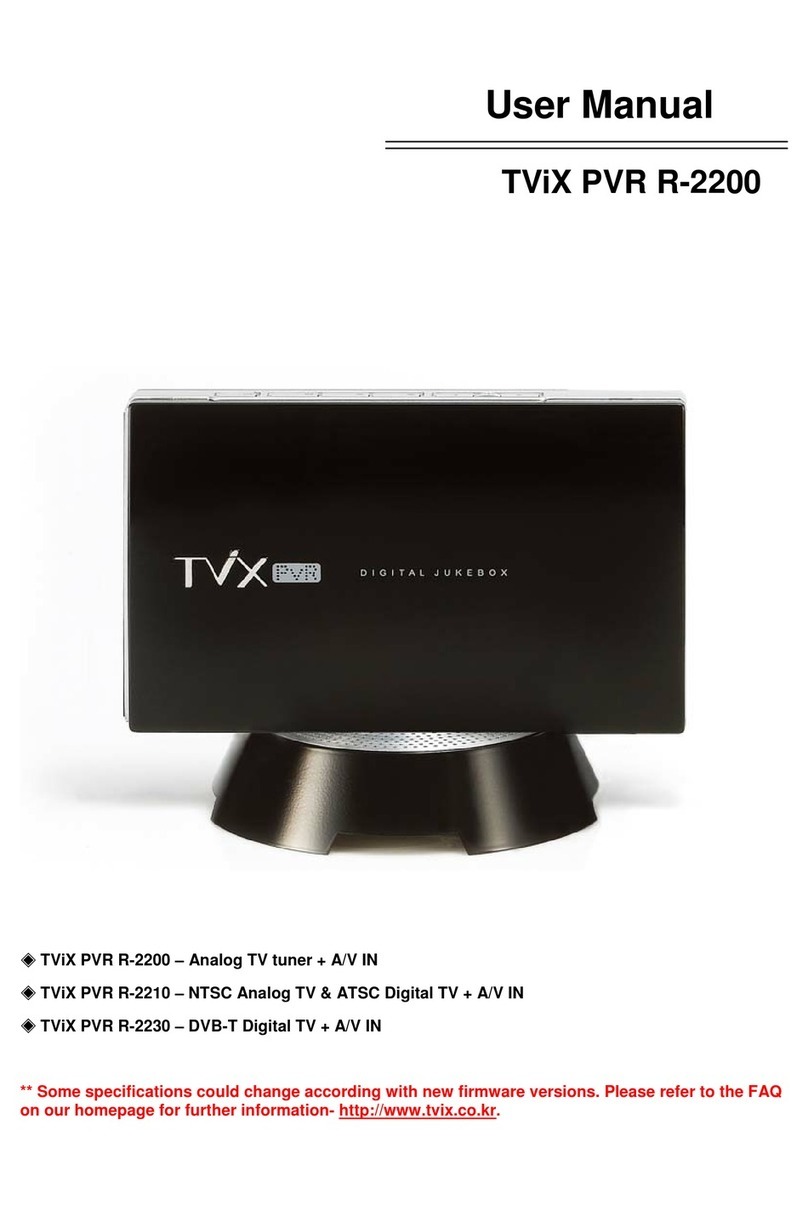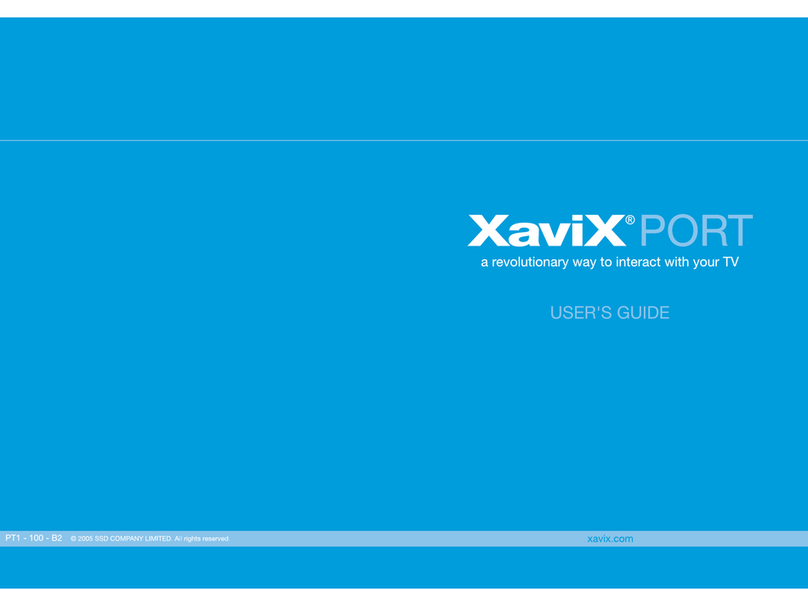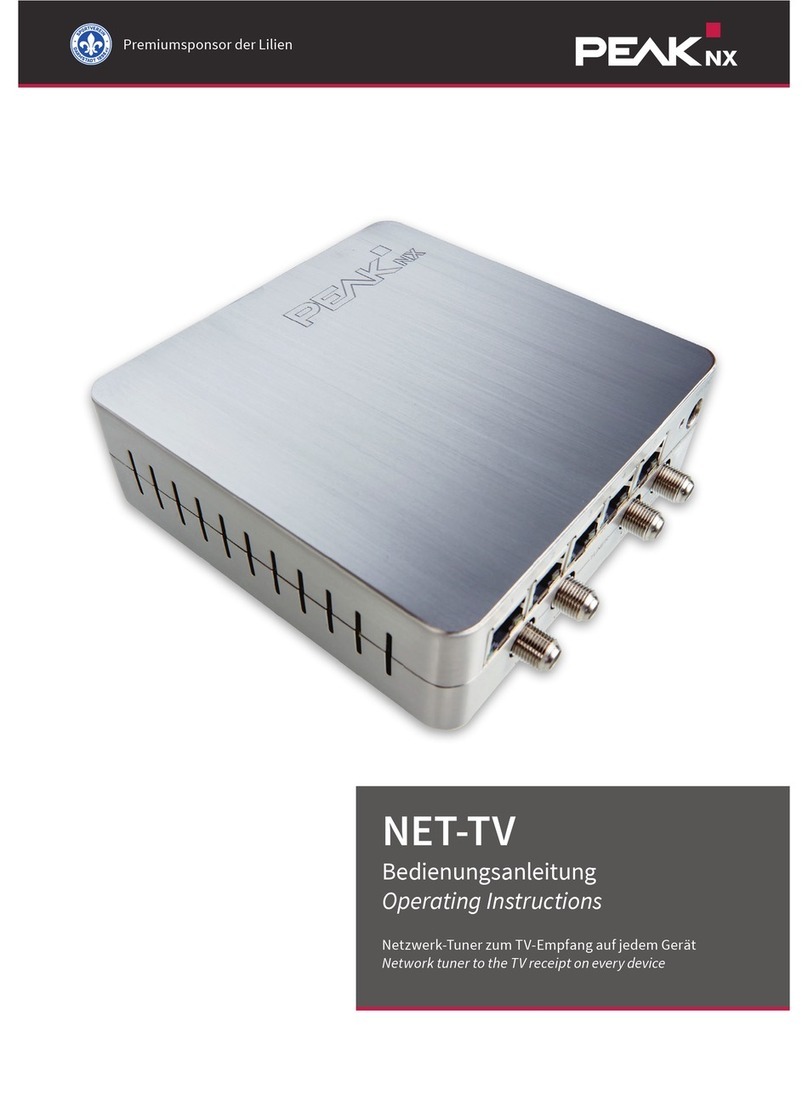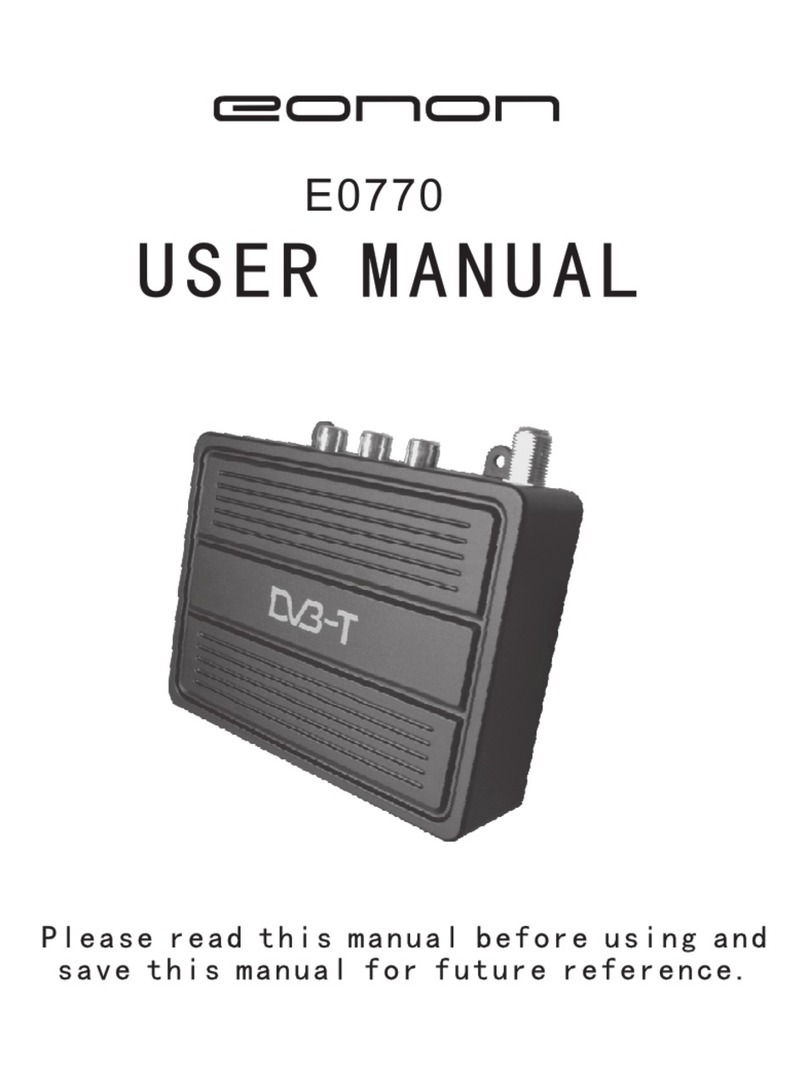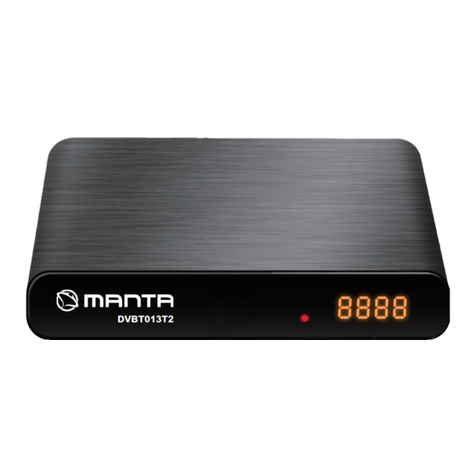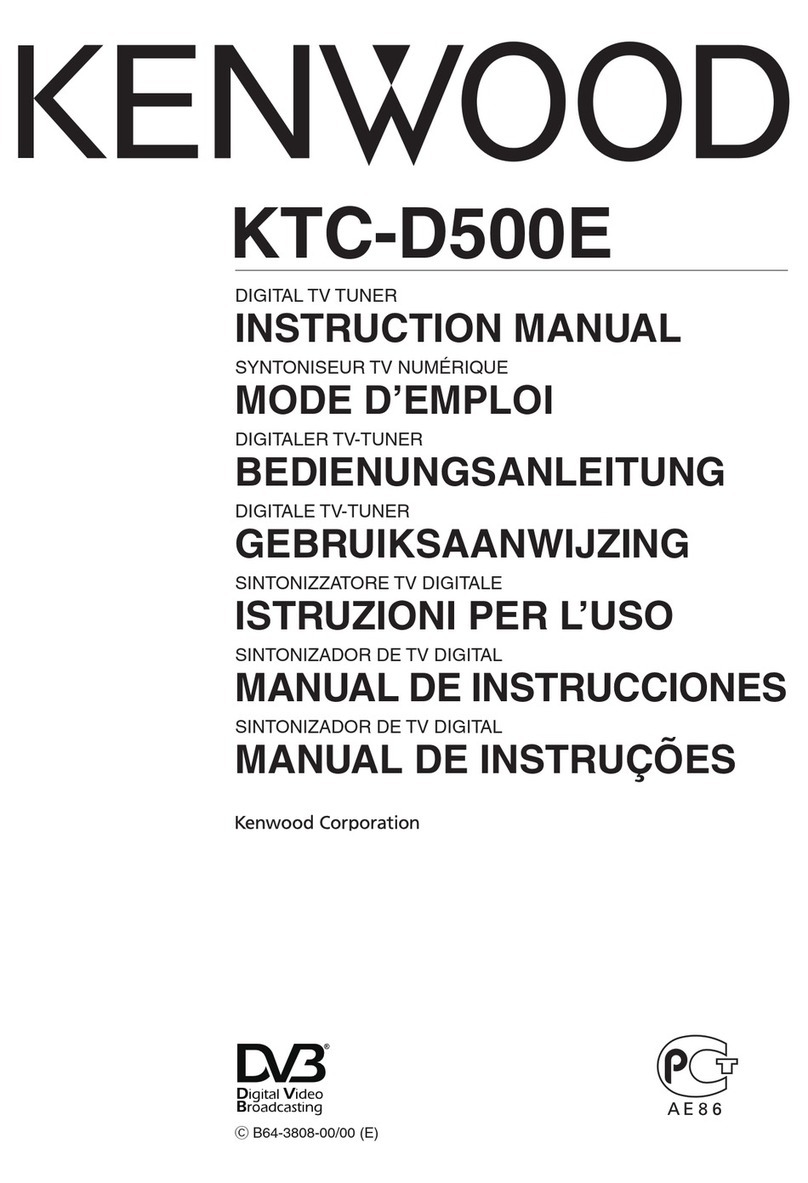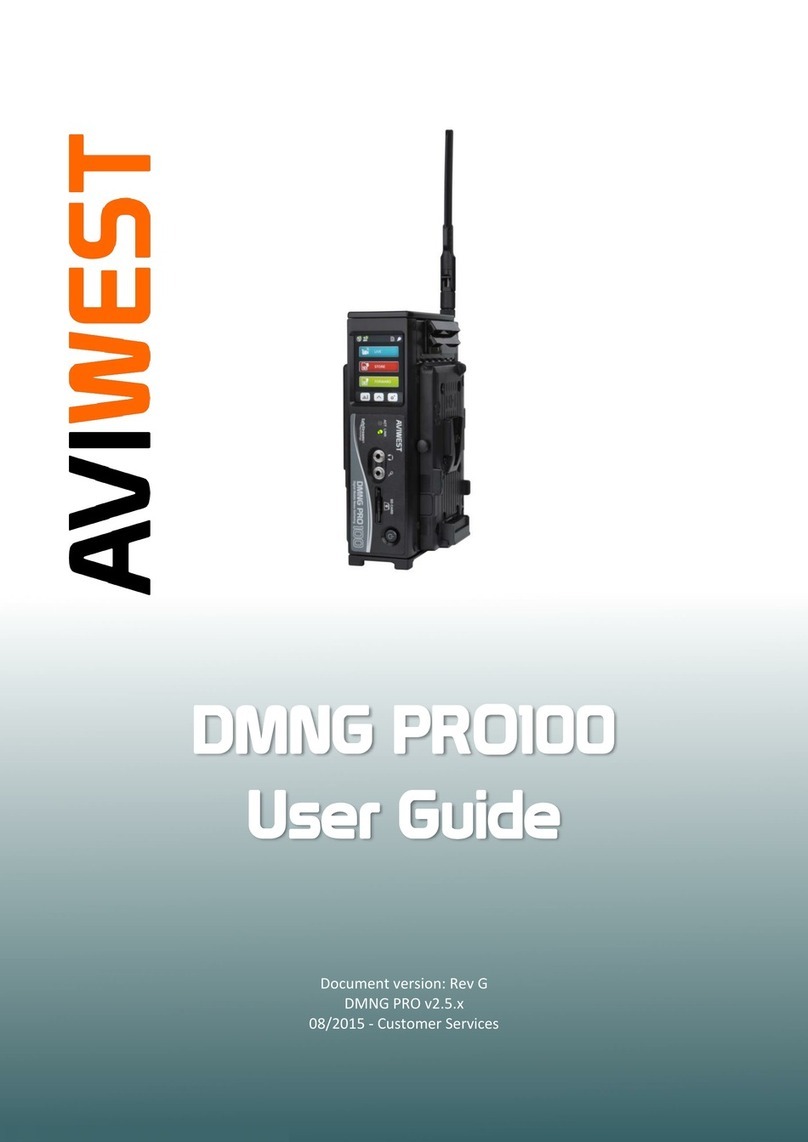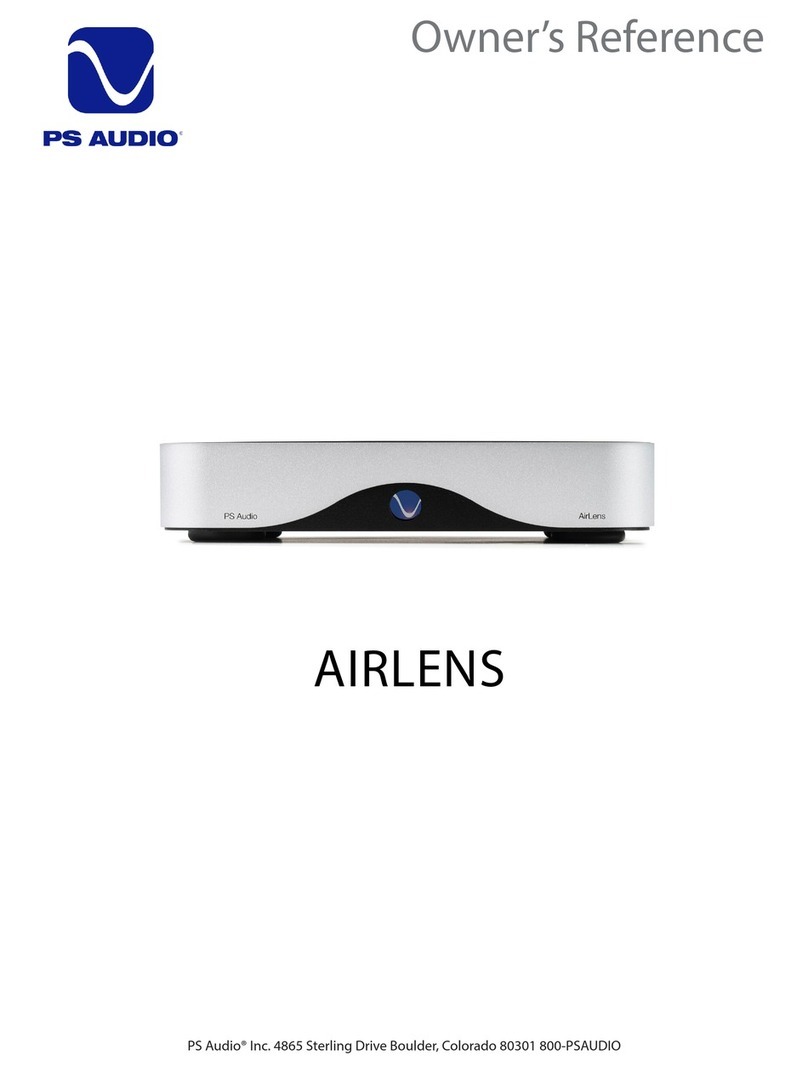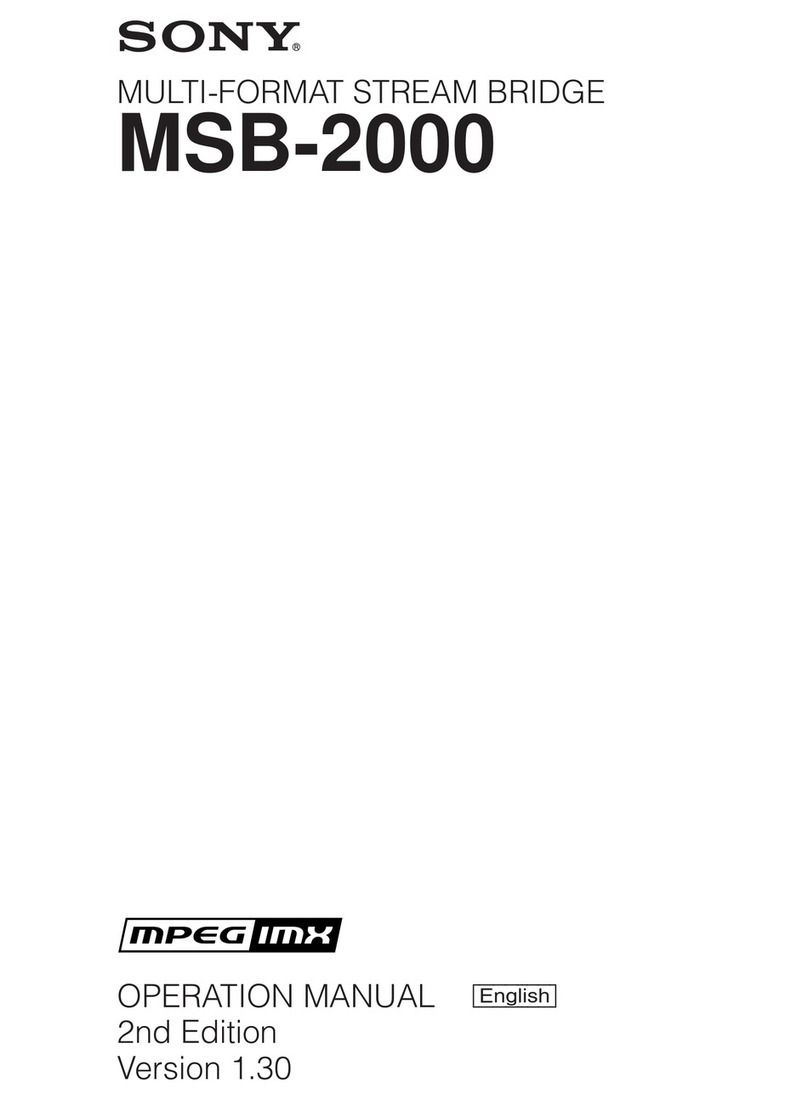Basic audio setup
To configure the WinTV-HD audio for
your speaker configuration, click on
Configure / Audio.
Set Audio Mixer Inputs to Wave
Volume.You should hear sound from
a TV channel. If you do not hear
audio, refer to the next section: “Quick
Troubleshooting Guide.”
NOTE: When S/PDIF audio, check
S/PDIF in the dialog box and
Jumper JP4 accordingly (Step 4).
Page 5 Page 6 Page 7 Page 8
Quick Troubleshooting Guide
© 2001 Hauppauge Computer, Inc. QI-HD-V1.3-ENG 09/25/01
Step 10: Configuring audio
Recording and playing back HD TV programs
Keyboard shortcuts
+ channel up
- channel down
Page Up Volume Up
Page Down Volume Down
Ctrl M Mute audio
Ctrl P Image print
Ctrl T Full screen TV
Ctrl F Image freeze
Ctrl C Image Copy to the clipboard
HDTV is broadcast over the airwaves. To receive HDTV, a UHF/VHF rooftop antenna is
recommended in most areas of the U.S. In cities, a bowtie antenna can often be used if
positioned near a window facing the Digital TV broadcaster.
Since HDTV is broadcast over the air, it is necessary to position the antenna to point at the
Digital TV transmitter. We have included a utility in the WinTV application to help position
the UHF/VHF TV antenna.
To position the UHF/VHF antenna, do the following:
• use the supplied list of Digital TV stations to find
a HDTV channel which broadcasts in your area.
For example, in Cleveland, WKYC broadcasts
HDTV on channel 2.
• open the Channel Suite Manager. To do this, click
on the Suite button on WinTV2000, or click on
Configure/Channels/SuiteManager on the
WinTV32 application. Then double click on Input
Sources. Click on Tuner to see the Digital TV
antenna configuration.
• Then click Add. Enter the HDTV Channel Number
(for example: 2 for WKYC in Cleveland) and the
Channel Name. Make sure Broadcast is set to
Antenna, and that Tuner Format is set
to DTV-ATSC. Click Add and then OK.
• Now, open the diag-
nostics menu to
help adjust your
UHF/VHF antenna.
Hold the CTRL but-
ton on your key-
board down while
clicking the right
mouse button.
Keep the right
mouse button
depressed for a few
seconds, and you’ll see a menu pop up. Click on the last line, Diagnostics.
• Now slowly rotate your antenna until the Sync Lock and Eq. Lock lights turn green.
This indicates that the UHF/VHF antenna is pointed to the DTV transmitter.
NOTE: A higher (SNR) number means a stronger signal.
Note: Our web site has information on installing the WinTV-HD and software updates.
WinTV-HD software updates can be found at: http://www.hauppauge.com/html/sw_tvhd.htm
Note: The WinTV-HD requires the latest version of Windows98, known as Windows98SE,
any version of Windows2000 or WindowsMe.
Install ERROR 69:
If you receive ERROR 69, see included bulletin.
Incompatible motherboards
We recommend the use of a motherboard with an Intel chipset because some older mother-
boards do not fully support the WinTV-HD.We have software updates on our web site which
will fix incompatibilities found with several VIA and SIS-based motherboards. Please see
http://www.hauppauge.com/html/sw_wcst.htm in the Tips section.
Poor image when running WinTV in 256-color mode
Many VGA’s cannot run WinTV in 256-color mode. Instead, run in 16-bit mode or higher.
No TV audio from your PC’s Left and Right speaker
Be sure your PC’s audio mixer LineIn setting is not muted, and at a reasonable volume level.If
the LineIn setting is not muted, you can verify that the WinTV-HD card is working by connecting
self-amplified speakers directly to the A/V cable’s 1/8” miniplug. Use the supplied Adapter if
necessary.
System lockups or error messages when running WinTV2000
Some VGA cards have memory conflicts with WinTV-HD.To fix this, try switching PCI slots.
Also, you can increase the memory range used by the WinTV-HD board in Device Manag-
er.To do this, look under Sound, video and game controllers, double click on the
Janus Capture section, click on Resources, unclick Use Automatic settings and
double click on Memory range. In the Edit memory range dialog box, there are small
up/down arrows next to Value. Click the little up arrow a couple of times. Make sure there
are no conflicts.Then click OK and then OK again.When it says Created a forced
configuration, click Yes. Then reboot your PC.
Poor TV Reception or Not detecting all channels:
Poor HDTV reception is generally the result of an weak TV signal. When using a 'roof-top'
antenna, an aerial booster may be required. If you find that some or all of the channels have not
been detected, you can insert channels manually. See Step 8.
Step 9: Manually Adding HDTV channels
High definition digital TV is broadcast in a format called the MPEG2 Transport Stream.
The MPEG 2 Transport Stream is the complete digital information from the broadcast trans-
mission, and includes video, audio and any data broadcast with the show (close captioning
data, program guide data, etc.).
When you record a High Definition TV show to your PC’s hard disk, you are actually record-
ing the entire MPEG2 Transport Stream. Once
recorded to disk, this Transport Stream can be
played back through the WinTV-HD, where the
video is decoded and displayed on your monitor.
Note: We recommend a PII 600 or better for record-
ing transport streams to you hard disk. Also, while
recording HD TV programs, we recommend running
the WinTV-HD full screen.
Recording an HD TV program to disk
To record a HD TV program to your hard disk:
1. Right click the mouse button on the TV
screen and hold it depressed for a few sec-
onds until the Settings menu pops up.
Then highlight Transport Capture and
click on Start Transport Capture.
2. The Select Stream to Play dialog box
will open. You can change the default file
name and change the directory where you
want the file recorded. Click Save and you
will start recording.
3. To stop recording, right click the mouse
button on the TV screen and hold it
depressed for a few seconds until the Settings menu pops up. Then highlight Trans-
port Capture and click on Stop Transport Capture.
Recording HD-TV consumes a lot of disk space. Every 10 minutes of HD uses about 2 Giga-
bytes of hard disk space. The WinTV-HD creates new file names approximately every 10
minutes (every 2 Gigabytes) of recording. On play-
back, the WinTV-HD automatically plays these files
uninterrupted so you see smooth playback.
Playing back a HD TV program
To play back your recorded file:
1. Right click the mouse button on the TV
screen and hold it depressed for a few sec-
onds until the Settings menu pops up. Then
highlight Transport Stream Playback and
click on Open File For PlayBack.
2. The Select Stream to Play dialog box will
open. The last recorded program will be
listed in the file name box. If this is the pro-
gram you want to playback, click open and
your recorded file will play. Otherwise,
select the program from the file list and
then click open.
3. To stop the playback, right click the
mouse button on the TV screen and hold
it depressed for a few seconds until the
Settings menu pops up. Then highlight
Transport Stream Playback and click
on Stop PlayBack Mode.
Note: If your recorded .tp file exceeds 1.96gig, the recording program will automatically start
a new file with the extension xxxxx.#1.mpg xxxxx#2.mpg and so on.
Tips on optimizing your PC system for HD recording and playback
The HD transport stream has a datarate of 19.4 million bits per second, and therefore record-
ing and playing back High Definition TV is very system intensive. Here are some tips on opti-
mizing your system for recording and playing back HD TV without dropping video frames:
- use a PC with a Pentium II 600MHz or faster. Though while recording and playback the
CPU does not do the actual encoding or decoding of HD video (this would require a
very fast CPU), it still needs to manage the disk drive
- defragment your hard disk driver before recording, or use a second disk drive just for
HD recording.
- use a 7200 RPM disk drive for recording (many old hard disk drives spin at 5400 RPM)
- make sure your hard disk drive has DMA enabled in Windows
- minimize the number of background applications running
- if you have a newer model VGA card which supports VIP1 (some of the recent NVidea
and ATI cards support this), then use the internal flat ribbon cable to connect the WinTV-
HD to the VGA card. By doing this, you eliminate moving the transport stream over the
PCI bus, thereby improving capture performance. When using the internal VGA cable,
you need to make a system registry change. See our website for more information:
http://www.hauppauge.com/html/sw_wintvhd.htm
- if your VGA card does not support VIP1 and cannot use the internal connector fromthe
WinTV-HD to the VGA card, then while recording we recommend running WinTV full
screen.
